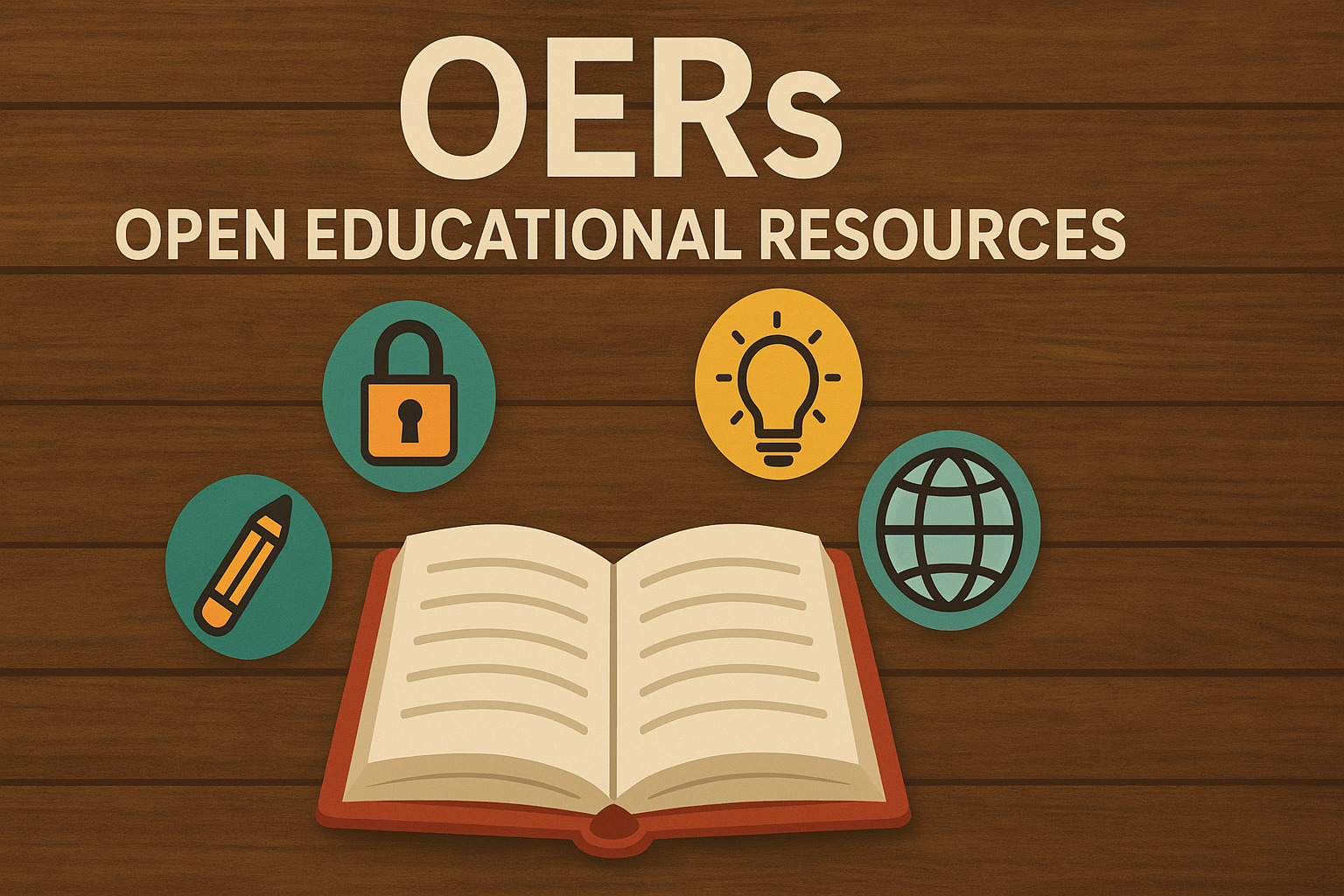Time to Reopen the Conversation on OERs

More than twenty years ago, I encountered the concept of Open Educational Resources (OERs) for the first time. It was a moment that reshaped my understanding of how knowledge could be shared, expanded, and made accessible. Since then, I’ve advocated for OERs across various roles and institutions, including contributing to Jisc’s Open Educational Resources Programme during my time at a New University (Jisc, n.d.).
At that point, there was a genuine sense of momentum: national initiatives, institutional repositories, and communities of practice all pointed toward a more open and collaborative future for education. We believed that making high-quality resources openly available would democratise access to learning, foster innovation in teaching, and encourage new forms of academic collaboration (Weller, 2011; Lane and McAndrew, 2010).
Now, working at a Russell Group university, that early optimism feels like a distant echo. Although I was involved in creating an institutional OER repository early in my current role, the project slowly lost traction and was eventually abandoned. OERs have not been a serious topic of discussion here for more than a decade. The institutional focus has shifted decisively toward other priorities—research performance, recruitment targets, and digital infrastructure built around proprietary platforms (Rolfe, 2017).
The Case for Reconsidering OERs
First, the global context has changed. In 2019, UNESCO published a formal Recommendation on Open Educational Resources, urging member states to support open practices and policies that promote access to knowledge, equity, and lifelong learning (UNESCO, 2019). While the UK response has been muted, this international framework offers a timely reminder that openness remains a live issue in educational policy.
Second, the COVID-19 pandemic brought online learning into the mainstream, highlighting both the possibilities and limitations of digital education. Institutions rapidly moved to virtual environments, but often defaulted to closed resources and short-term solutions (Bayne, Gallagher and Lamb, 2020). In this environment, OERs offer an underutilised pathway to creating scalable, adaptable, and inclusive learning materials (Cronin and MacLaren, 2018).
Third, equity and access are increasingly central to the mission of UK universities. As the cost-of-living crisis continues to affect students, the use of free, openly licensed materials can play a small but meaningful role in addressing structural inequalities in access to learning. OERs reduce dependency on costly textbooks and commercial content, aligning with broader widening participation strategies (Havemann, 2020; Lambert, 2018).
Fourth, the rise of AI in education creates both opportunities and risks. In a landscape where content generation is increasingly automated, the value of curated, quality-assured, and openly licensed educational content cannot be overstated. OERs provide a foundation for experimentation without entangling institutions in copyright or licensing issues (Knox, 2020).
What Would It Take to Make OERs Matter Again?
We know from past experience that good intentions alone aren’t enough. To make OERs meaningful in the Russell Group context, institutional strategy and academic values must align. This would involve:
- Embedding OERs in curriculum design, not as an afterthought but as part of pedagogical innovation.
- Recognising and rewarding academic contributions to OER creation and curation.
- Creating robust infrastructure and support, including technical platforms and guidance on open licensing.
- Fostering communities of practice, both within and across institutions, to share expertise and avoid duplication.
Critically, we must position OERs not simply as “free resources,” but as part of a broader pedagogical and ethical commitment: to transparency, accessibility, and academic collaboration (Bali, Cronin and Jhangiani, 2020).
A Missed Opportunity?
Russell Group institutions have vast intellectual capital and technological resources. Yet many have retreated from open education in favour of commercial learning platforms and locked-down content. This narrowing of focus is, in my view, a missed opportunity—not just in terms of educational innovation but also in terms of fulfilling our public mission.
OERs are not a panacea. They require sustained investment, cultural change, and pedagogical engagement. But if we are serious about rethinking digital education for the long term, then the conversation about OERs is one we urgently need to reopen.
References
Bali, M., Cronin, C. and Jhangiani, R.S. (2020) ’Open at the Margins: Critical Perspectives on Open Education’, in Conrad, D. and Prinsloo, P. (eds.) Open(ing) Education: Theory and Practice. Leiden: Brill, pp. 35–52.
Bayne, S., Gallagher, M.S. and Lamb, J. (2020) The Manifesto for Teaching Online. Cambridge, MA: MIT Press. Available at: https://mitpress.mit.edu/9780262539838/the-manifesto-for-teaching-online/ (Accessed: 29 March 2025).
Cronin, C. and MacLaren, I. (2018) ’Conceptualising OEP: A review of theoretical and empirical literature in Open Educational Practices’, Open Praxis, 10(2), pp. 127–143. Available at: https://doi.org/10.5944/openpraxis.10.2.825 (Accessed: 29 March 2025).
Havemann, L. (2020) ’Open in the Evening: Openings and Closures in an Ecology of Practices’, in Conrad, D. and Prinsloo, P. (eds.) Open(ing) Education: Theory and Practice. Leiden: Brill, pp. 329–344.
Jisc (n.d.) Open Educational Resources (OER) Programme. Available at: https://openeducationalresources.pbworks.com/w/page/24838291/Open%20Educational%20Resources%20Programme (Accessed: 29 March 2025).
Knox, J. (2020) ’Artificial intelligence and education in China’, Learning, Media and Technology, 45(3), pp. 1–14. Available at: https://www.research.ed.ac.uk/en/publications/artificial-intelligence-and-education-in-china (Accessed: 29 March 2025).
Lambert, S.R. (2018) ’Changing our (dis)course: A distinctive social justice aligned definition of open education’, Journal of Learning for Development, 5(3), pp. 225–244. Available at: https://jl4d.org/index.php/ejl4d/article/view/290 (Accessed: 29 March 2025).
Lane, A. and McAndrew, P. (2010) ’Are open educational resources systematic or systemic change agents for teaching practice?’, British Journal of Educational Technology, 41(6), pp. 952–962. Available at: https://doi.org/10.1111/j.1467-8535.2010.01119.x (Accessed: 29 March 2025).
Rolfe, V. (2017) ’Striving toward openness: But what do we really mean?’, The International Review of Research in Open and Distributed Learning, 18(7), pp. 75–88. Available at: https://doi.org/10.19173/irrodl.v18i7.3207 (Accessed: 29 March 2025).
UNESCO (2019) Recommendation on Open Educational Resources (OER). Paris: United Nations Educational, Scientific and Cultural Organization. Available at: https://en.unesco.org/themes/building-knowledge-societies/oer/recommendation (Accessed: 29 March 2025).
Weller, M. (2011) The Digital Scholar: How Technology Is Transforming Scholarly Practice. London: Bloomsbury Academic. Available at: https://doi.org/10.5040/9781849666275 (Accessed: 29 March 2025).